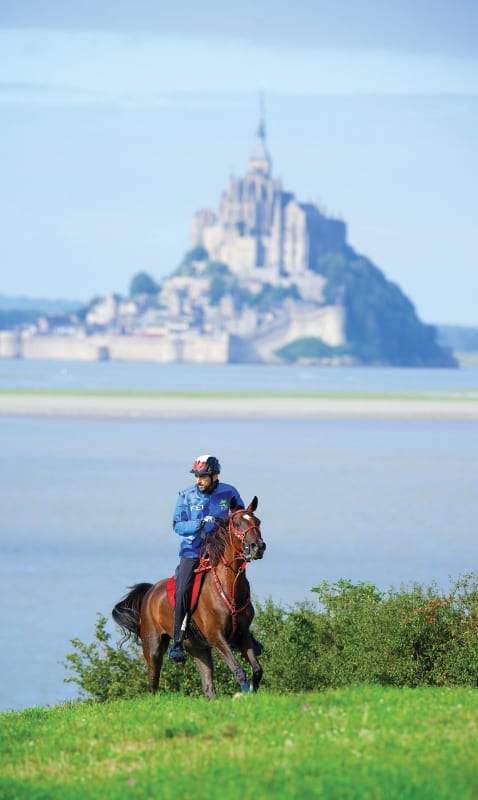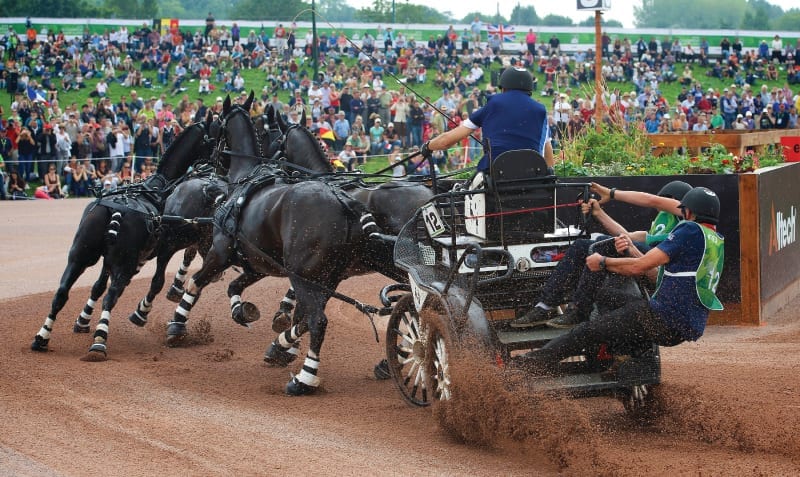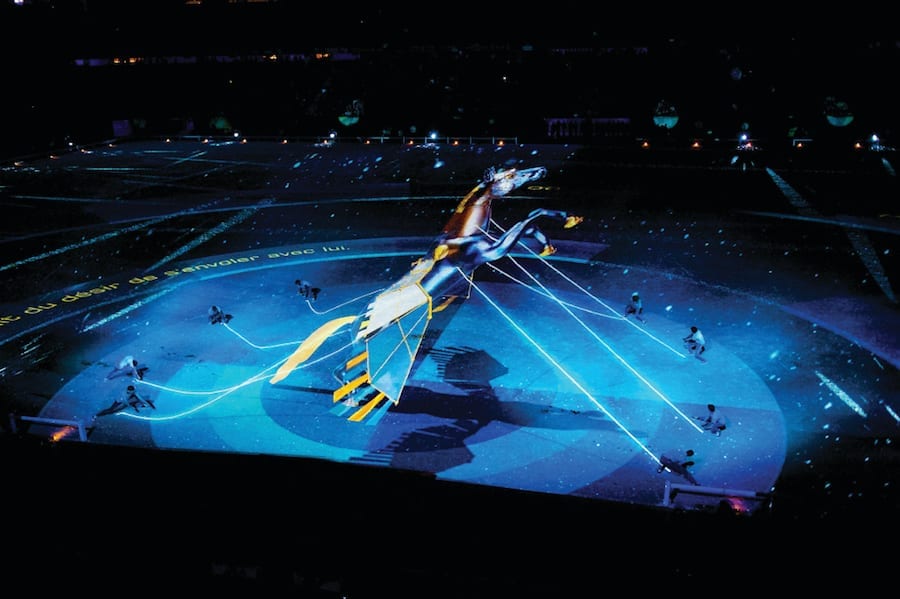Equestrian Games expected to be the world’s third-largest sporting event in 2018
By Margaret Freeman
Photographs courtesy of FEI
The World Equestrian Games will be staged in western North Carolina next year but has barely attracted notice in the Carolinas yet, outside of horsey circles. The event, however, will have a huge impact on the area, with thousands of international visitors settling in for two weeks.
WEG, as it’s called, is the world championships for eight international horse sports and is staged every four years in rotation with the Summer Olympic Games. On September 10-23, 2018, WEG will be held at the brand new Tryon International Equestrian Center (TIEC) in Mill Spring, North Carolina, just north of the South Carolina border and east of Tryon, North Carolina, which lends its name to an area known nationwide by equestrians as Tryon Horse Country.
Organizers expect to sell over half a million tickets over the two-week period to spectators from 72 countries. That will likely make WEG the third-largest sporting event in the world in 2018, behind the Winter Olympics in South Korea and soccer’s World Cup in Russia, both also quadrennial events. TIEC officials are guesstimating an economic impact to North and South Carolina of $400 million.
If you’re an equestrian fan living nearby, you’re excited that you’ll be able to watch the best horses and riders in the world compete without having to travel. If you’re not and thus the news seems ho-hum, well, compare this to a fall football Saturday in a Southern college town. Then picture 40,000 to 50,000 spectators visiting that town every day for two weeks. And that town is in a rural county with two motels right now and a population of barely 20,000.
Where will they all stay? Charlotte, Greenville and Asheville and all the points in between.
If you live in that general area, you will feel the effect on your highways, your restaurants, and your airports. Forget about asking friends to visit if they need a motel room. On the other hand, you could make a tidy income renting out any available spare space, which many in the Tryon area are already planning to do.

Why Tryon?
 The news that WEG was being considered for Tryon in 2018 dropped like a bombshell over TIEC this summer, because it was originally planned for Bromont, Ontario, site of the equestrian events during the 1976 Montreal Olympics. However, the organizers there dropped out when the funding they needed didn’t materialize. The Federation Equestre Internationale (FEI), which organizes international horse sports, had to find a new site fast that could handle the vast scope of the event on a short time frame.
The news that WEG was being considered for Tryon in 2018 dropped like a bombshell over TIEC this summer, because it was originally planned for Bromont, Ontario, site of the equestrian events during the 1976 Montreal Olympics. However, the organizers there dropped out when the funding they needed didn’t materialize. The Federation Equestre Internationale (FEI), which organizes international horse sports, had to find a new site fast that could handle the vast scope of the event on a short time frame.
TIEC saved the day for the FEI and WEG. At first, it seemed an unlikely choice since infrastructure in the area was limited and TIEC itself didn’t even exist three years ago. TIEC is the brainchild of Mark Bellissimo, who operates a winter haven for horse sports in Wellington, Florida, and developed it as an alternative for nomadic equestrians during the warmer months. He and his group of five private investors have already spent $100 million on the 1,600-acre site facility, built on the bones of a former undeveloped golf community with 800 home sites.
The investment so far could double to cover future plans, plus the $50 million more needed to stage WEG. The flood of visitors and the huge sums of money needed to provide services to them means huge logistical challenges for TIEC in the next 1½ years.
“We are working through the planning stages of many issues regarding WEG currently, including public safety, transportation, parking, and ticketing,” said Sharon Decker, TIEC chief operations officer. “It is critical the Games be safe and accessible to regional residents as well as visitors from all over the world. Security, ease of access and affordability will all be considerations as we make final decisions.”
Economic Impact
 TIEC’s core area of 1,200 stalls, 12 arenas and spectator seating of 12,000 (plus VIP areas), has already been built, and thousands of temporary spectator seats will be added for WEG. A huge covered arena and a cross-country course are up and running, plus there are restaurants and shops. There’s also a new village of cabins, motel rooms and RV pads, but even so, current TIEC competitors have to range further than they would prefer from their horses to find a place to sleep.
TIEC’s core area of 1,200 stalls, 12 arenas and spectator seating of 12,000 (plus VIP areas), has already been built, and thousands of temporary spectator seats will be added for WEG. A huge covered arena and a cross-country course are up and running, plus there are restaurants and shops. There’s also a new village of cabins, motel rooms and RV pads, but even so, current TIEC competitors have to range further than they would prefer from their horses to find a place to sleep.
Construction is under way for more hotels, stores, and restaurants, plus hundreds of home sites, indeed an entire planned community just off the Pea Ridge Road exit of U.S. 74, three exits east of I-26. TIEC, by the way, is its own tax district and has not caused a rise in taxes for Polk County or nearby Rutherford County.
TIEC itself is planning 1,000 permanent rooms in various types of housing, including luxury resorts, and is encouraging the growth of 5,000 other rooms in the area just to service its current operations. But meeting the housing needs of WEG’s horde of international spectators, the 900 riders and horses — and all their grooms, coaches and other team helpers — plus officials and 3,000 volunteers presents special challenges, not just in numbers but in cost. TIEC is encouraging local housing to not inflate prices during the event, often a complaint at previous WEGs.
Bellissimo’s group is meeting the housing problem in an imaginative way with a factory run by his investment group in nearby Forest City, North Carolina, called US Precision Construction that’s building prefab housing for the TIEC site. The extra housing is due to be sold after WEG, although the economic influence to the region will remain.
“US Precision will be creating much of the lodging project for the Games and will continue to produce precision-built product beyond the Games, marketing to the commercial and residential markets nationwide,” said Decker.
Another challenge is staging all the WEG sports on one site — not always the case at other WEGs —plus providing food, retail shops and various forms of entertainment besides watching horses. TIEC already opens its doors to spectators for free, even for major events, although VIP table seating is priced accordingly. A family-friendly carnival atmosphere enlivens TIEC on many Saturday nights with street entertainment, a carousel, music, and lots of diversions for kids. Bellisimo plans to keep that atmosphere going for WEG. The difference will be that admission won’t be free for those two weeks.
Tickets are due to go on sale this winter, and all the details have not yet been confirmed. TIEC has indicated some form of special pricing for local residents, and there even may be a ticket that will just get you on the grounds to enjoy the atmosphere but not for entry into the actual horse competitions. Much of the parking will be off-site with shuttles running. The states of North and South Carolina have already committed to helping with traffic and security, and Homeland Security is also part of the safety picture.

If you plan to attend WEG
Keep an eye out on the www.TryonWEG.com website for the ticket structure, transportation plans, and event schedules. It’s likely that general parking will not be available at TIEC itself, with numerous satellite parking and shuttles set up as far as 1½ hours away. The premiere tickets will be for the jumping and dressage freestyle events. Also expect large crowds for the eventing cross-country day. If you want to get a taste of the WEG sports ahead of time, there will be test events to solve logical problems and train volunteers throughout 2017, and they likely will be free.
Why are Bellissimo and his group going to such trouble to stage this enormous undertaking? Going back to the Polk County Commissioners meeting three years ago where TIEC was first approved, Belissimo promised to build “the finest equestrian center in the world.”
Few people at the packed meeting took what seemed at the time like hyperbole seriously but did expect a fine facility to be built. WEG is one way to announce to the equestrian world that he’s indeed delivered what he promised. The international attention will help fill its rings with competitors for seven months of the year and attract visitors to the TIEC resort facilities year round.
Just consider past WEG locations: Stockholm, Sweden – 1990; The Hague, The Netherlands – 1994; Rome, Italy – 1998; Jerez, Spain – 2002; Aachen, Germany – 2006; Lexington, Kentucky – 2010; and Normandy, France – 2014.
Now, add to the bottom of that list: Mill Spring, North Carolina – 2018. E
The Sports at the World Equestrian Games
The two weeks of competition will include eight sports, most of which will be staged over several days, and thus several sports will be running each day. European countries tend to dominate at WEG, with plenty of competition from the U.S. and British Commonwealth countries.
Jumping: The best-known of the equestrian sports worldwide, the riders negotiate huge obstacles in an enclosed arena. The scoring depends simply on whether jumps are knocked down or refused or a time limit is exceeded. There will be team and individual medals.
Dressage: The horses and riders perform classical patterns in an enclosed arena with seven judges set around the edge. Team and individual medals are determined by pre-set tests, and there are also medals for musical freestyle, which is a big crowd pleaser.
Eventing: This is a three-phase, equine triathlon. The first day includes a pre-set dressage test. The second-day endurance test is the heart of the competition with huge fixed obstacles set over several miles of open rolling terrain. The third day is a jumping course inside an arena scored similarly to straight jumping. The same horse/rider combination must complete all three phases. There are team and individual medals.
Driving: The format resembles eventing, except the competition involves carriage teams of four horses. The first day is a dressage test; the second is a marathon involving complicated obstacles; the third is an obstacle course in an enclosed field. The same four-horse team and driver must complete all three phases. Like eventing, the marathon phase in open countryside is exciting to watch. There are team and individual medals.
Endurance: This is essentially a 100-mile horse race, which will start and finish on the TIEC grounds but will go out into the Polk County countryside on dedicated horse trails. The condition of the horses is closely monitored by veterinarians. The Arabian breed is featured here, and Middle Eastern royal sheiks often do well. There are team and individual medals.
Vaulting: This is essentially gymnastics performed on a bareback horse. There’s a team event, although no more than three people can be on one horse at a time. There is also a pas de deux event and separate individual medals for men and women, the only event at WEG where separate medals by sex are awarded.
Reining: This is the only WEG event using Western saddles and, although the sport originated with American ranch work, it is catching on quickly in European countries. This is a judged event demonstrating patterns used to maneuver cattle. There are team and individual medals. U.S. riders tend to win here, and the predominant breed is the American Quarter Horse.
Para-Equestrian Dressage: Individual medals are awarded in five grades, depending on the level of disability, and team medals are awarded as well. The partnership between horse and rider is inspiring to see considering that many of the riders are profoundly disabled and enjoy greater freedom of movement when riding than they do unmounted.

